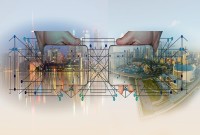- Home
- Business Processes
- Industry Knowledge
- Aerospace Industry
- Automotive Industry
- Banking Domain
- BFSI Industry
- Consumer/ FMCG Industry
- Chemicals Industry
- Engineering & Construction
- Energy Industry
- Education Domain
- Finance Domain
- Hospitality Domain
- Healthcare Industry
- Insurance Domain
- Retail Industry
- Travel and Tourism Domain
- Telecom Industry
- Leadership Skills
- eLearning
- Home
- Business Processes
- Warehouse Management
- Types of Order Picking Methods in the Warehouse
Types of Order Picking Methods in the Warehouse
There are many different types of picking in a warehouse and each one works as a customized solution for each business. Depending on the size of your warehouse and inventory, the manpower you have on hand, and the number of customer orders made each day, there may be certain methods that are more efficient for you than others.
There are many different types of picking in a warehouse and each one works as a customized solution for each business. Depending on the size of your warehouse and inventory, the manpower you have on hand, and the number of customer orders made each day, there may be certain methods that are more efficient for you than others.
Given below are the commonly used types of order picking in the warehouse:
Single Order Picking
The most common type of picking is single order picking. Workers pick orders one at a time as they receive them and continue picking items until the entire order is complete. The picker is provided one order at a time and then goes to the warehouse to find each item on the list before completing the order. However, in many cases, the sequence in which orders are given to pickers and the routes they follow are not optimized. The worker must always make a full trip through the warehouse just to fill a single order. This is not the most efficient method. This kind of inventory management is best suited to only the smallest of warehouses as it is very inefficient.
Batch Picking
In this case, workers can pick multiple orders at a time, with both manual and automated picking. The manual picking environment works by allowing the picker to pick SKUs required for multiple orders at a time. This minimizes the travel time. Batch picking is also used to pick loose SKUs from the forward pick area. Products are considered to be picked and then sorted. With automated picking, the worker remains in one location while horizontal and vertical carousels deliver the required SKUs to the worker.
Pick and Pack Parcel Shipments
In this case orders are picked in a batch mode to allow for a pick and sort type of picking. The use of this model enables immediate release. Containerization (volume and quantity) is performed simultaneously and the items are picked directly into the shipping container. The container is packed automatically as it is being picked.
Multi-Batch Order Picking
This is the ideal pick and pack solution for cases when multiple smaller orders need to be distributed. These orders are more effective for workers that travel long distances within a warehouse. Multi-batch picking is used for orders coming from different areas in the warehouse, and thus reduces the order pick times by collecting numerous orders simultaneously. This process also reduces the time needed to process multiple SKUs.
Manifest Picking
A manifest in material-handling context is a list of cargo either delivered to or shipped from a warehouse. Manifest picking is a flexible picking methodology which enables users to pick across Pick Slips or across Sales Orders. The operator builds a pick manifest at the start of picking operation by scanning multiple pick slip numbers or sales orders. The operator picks the material for the orders using a set of interleaved pick tasks. This way more than one order can be simultaneously picked in a single pass of the pick zone. Once all tasks from all orders are picked, operator either drops the picked LPNs or performs a "Pass" to the next zone.
Zone Picking
This method divides the warehouse into several zones and assigns workers to only work within a specific zone. Each zone can use its own type of technology and storage system, depending on what would work best for the SKUs stored in that zone, and the storage technology used in that zone. Orders can be picked in the past from zone to zone, or delivered to a specific point before shipping. LTL (Less than truckload)/TL (Truckload) shipments can be picked either from the Bulk or Forward Pick areas based on the inventory availability.
Wave Picking
Workers are assigned to zones, pick only from those zones, and do so in batches thus fulfilling multiple orders simultaneously.
Pick and Pass
This strategy involves passing orders from one zone to another for fulfillment. If an order originates in zone A, a worker adds all the SKUs required from that zone before it passes onto zone B. This is repeated until all the items can be taken to shipping. To maximize productivity with this method, order management software (OMS) can be used to manage the order flow.
Full Case Pick and Pack Process
In this process, the user picks full cases from the bulk storage. Though packing is not required for full case picking, the inventory is brought into the weigh station to print the labels and add dunnage materials, if needed. This is where the inventory container is converted into an outbound container.
Order Consolidation This method is an alternative to pick and pack. Each zone selects the SKUs required for the order simultaneously. When one zone’s partial order is complete, it is sent to consolidation until the SKUs from the other zones arrive. When all the SKUs are together, the partial orders are matched up into one large order. This order is then sent to shipping. This is a very advanced strategy that required inventory management software (IMS).
Advanced Systems Picking
In this system, totes for individual orders travel from zone to zone where they are delivered into picking stations were a worker is picking from carousels. These batch stations use specific systems to direct the correct quantity to each tote. During this process, the bulk components of orders can be picked by workers on forklifts who are doing one order at a time or batch picking. All these components are brought together in consolidation.
Picking based on inventory aging
One can use FIFO and LIFO strategies to ship items, based on the date when the inventory entered the warehouse. When inventory is first received or created in the warehouse, the warehouse system captures the aging date. This date is then used to identify the oldest or newest inventory in the warehouse.
Put Wall Order Consolidation
To understand put wall concept, think of put walls as cabinet-like structures that are divided into a series of compartments, also known as cubbies or chutes. On one side operators put product into assigned cubbies for their respective orders and on the other side, another operators pack out these orders. This is useful for scenarios where one need to consolidate a product to a prepack staging area, based on configurable criteria. Companies that ship to stores or handle small items will benefit from decreased picking time. This warehousing functionality is also referred to by other names, such as put-to-light and break opens. In practice, a worker on one side of the put wall places items for different orders in individual slots or totes (that’s the “put” in put wall). After all items for a given order are in the designated location, a worker on the backside of the wall removes the items for packing and shipping.
Related Links
You May Also Like
-
One of the warehousing best practices that retailers like Walmart, Amazon, and Target have adopted is known as cross-docking. During this process the inbound products are unloaded at a distribution center and then sorted by destination, and eventually reloaded onto outbound trucks. In real parlance, the goods are not at all warehoused but just moved across the dock (hence the name).
-
Warehouses may seem like a simple, straightforward concept, but they actually include a variety of different types of warehouses that all have their own niche. The type of warehousing that’s right for you depends on your specific industry, location, and needs. From private warehousing, distribution centers, and climate-controlled warehouses, there’s an option to suit every business.
-
What is the difference between Warehouse Management & Inventory Management?
The terms “inventory management” and “warehouse management” are sometimes mistakenly used interchangeably as they both deal with operations and products of industries. Despite their few similarities, there are many notable differences between warehouse and inventory management systems.
-
Inventory is money, and hence businesses need to perform physical inventory counts periodically to make sure that their inventory records are accurate. The traditional approach to conducting inventory counts is to shut down a facility during a slow time of year to count everything, one item at a time. This process is slow, expensive, and (unfortunately) not very accurate.
-
The Outbound process starts with routing the shipments. The Outbound execution process starts from the point when pick tasks are completed for an outbound shipment and ends at the point where the outbound packages are loaded into trailers. The Warehouse Outbound process includes managing and controlling outgoing materials starting from the download of orders through to the shipping of products from the warehouse.
-
Business Case of Multiple Warehouses
Adding extra warehouses to business provides many benefits such as reducing shipping costs, increasing storage capacity, and having warehouses for specific purposes to simplify overall warehouse management. Multiple warehouses allow you to organize your inventory in a way that helps your business be more effective.
-
After products have been received and passed a quality inspection, they need to be stored so that you can find them when you need them. This process is called putaway. The spot where you store a particular product is called a location. One section of a warehouse might have small locations for light items; another area may have large locations on the floor for heavy items.
-
Warehouses can be places where piles of packed or loose products occupy space. If left disorganized, it will become very challenging to identify products for packing or picking. Hence, proper organization of warehouse is very important. Warehouse labeling systems eliminate this problem by making sure products are easily identified and managed during the warehousing and shipping process. Labeling is the most functional and cost-effective way to keep your warehouse organized and operating efficiently.
-
Types of Order Picking Methods in the Warehouse
There are many different types of picking in a warehouse and each one works as a customized solution for each business. Depending on the size of your warehouse and inventory, the manpower you have on hand, and the number of customer orders made each day, there may be certain methods that are more efficient for you than others.
-
To stay competitive in today’s tough market, the location of your warehouse is vital. To grow retail business need to offer to customers faster and affordable shipping time, which is dependent on the warehousing location as the location of the warehouse affects the transit time to ship orders to customers.
Explore Our Free Training Articles or
Sign Up to Start With Our eLearning Courses

About Us
Learning
© 2023 TechnoFunc, All Rights Reserved










